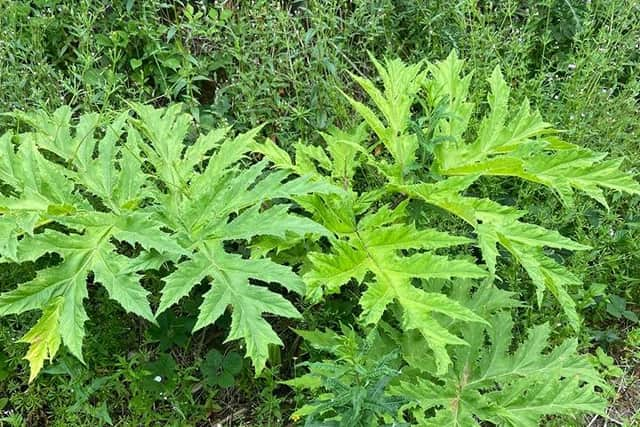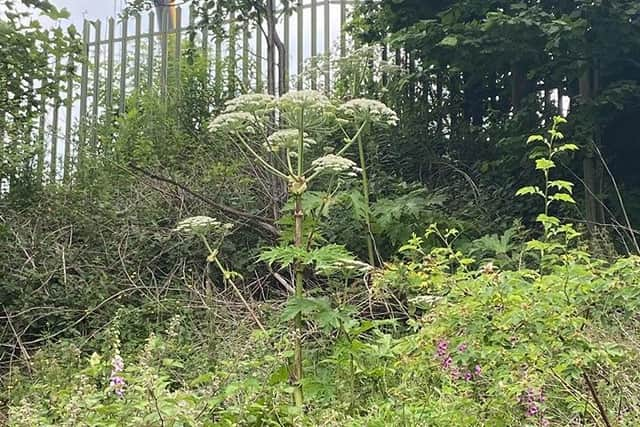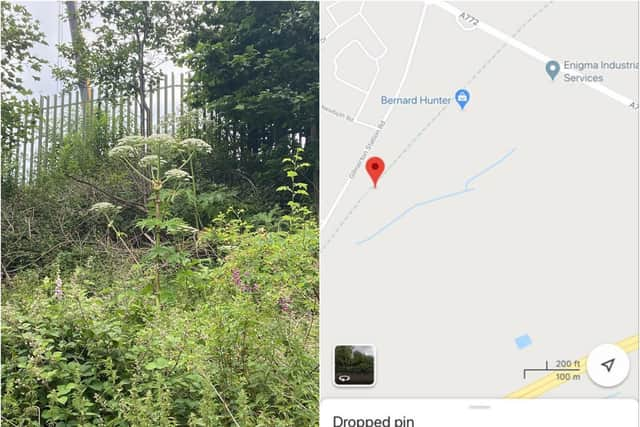Children using Edinburgh cycle path among those at risk from toxic giant hogweed which can blind and scar
and live on Freeview channel 276
Pictures and video footage sent to the Edinburgh Evening News shows giant hogweed either side of the track, just south of Gilmerton and close to some industrial buildings. The species is often described as the UK’s most dangerous plant because its sap can cause life-changing burns, blisters, scarring and blindness if you come into contact with it.
Stan Whitaker, a Scottish Natural Heritage (SNH) expert on invasive species, confirmed that the weed pictured in this case is giant hogweed.
Advertisement
Hide AdAdvertisement
Hide AdIt is an invasive species which was introduced to Scotland by horticulturalists as an ornamental plant in the 19th Century - but it soon spread out of control. The weed can grow to a height of several metres and looks like a giant parsley stalk.


Edinburgh resident Kellie Morton came across the giant hogweed on Friday while out on a run. She is particularly concerned about the risk to children who might fall into it while cycling or touch it without knowing the potential dangers.
She said: "My partner and I go running along this track regularly. Today, while out running, I recognised the large leaves and how tall the weed is and was shocked to see them growing so close to a path used by many people, including young children."
An ‘issue’ in some parts of Scotland
Landowners are responsible for any giant hogweed growing on their land and it remains unclear who is responsible in this case, although Edinburgh City Council say they are looking into it.
Advertisement
Hide AdAdvertisement
Hide Ad

Mr Whitaker, SNH’s advisor on invasive, non-native species, said: “Giant hogweed is certainly an issue in some areas of Scotland, and we would urge land owners to control it whenever possible, and come to us for advice if necessary.
“We are also continuing to invest in a number of larger projects around Scotland to combat invasive, non-native species like giant hogweed. These projects will bring significant benefits for native wildlife, including the Scottish Invasive Species Initiative in the north of Scotland.”
SNH can advise on ways to prevent giant hogweed causing injury or nuisance to neighbours.
It is though the seeding of the plant has come earlier this year due to a mild winter, and that the growth of the weed has been exacerbated by Covid-19 lockdown restrictions on people who would normally be able to manage it.
Advertisement
Hide AdAdvertisement
Hide Ad

Giant hogweed is not native to the UK and originates from the Caucasus Mountains and Central Asia.
According to the Woodland Trust website, it can now be found throughout much of the UK and often colonises river banks where its seeds are transported by the water. A good identifier of the species is its jagged leaves and green stems with purple blotches and stiff, white hairs. They also have a thick circle of hairs at the base of each leaf stalk.
The Woodland Trust’s advice, if you do get giant hogweed sap on your skin, is to wash the area thoroughly immediately, seek medical advice and to not expose the area to sunlight for a few days.
Chemicals in the sap can cause photodermatitis or photosensitivity, where the skin becomes very sensitive to sunlight and may suffer blistering, pigmentation and long-lasting scars.
According to several media reports in 2015, at least five children were left with severe burns after coming into contact with the plant in parks in Greater Manchester.